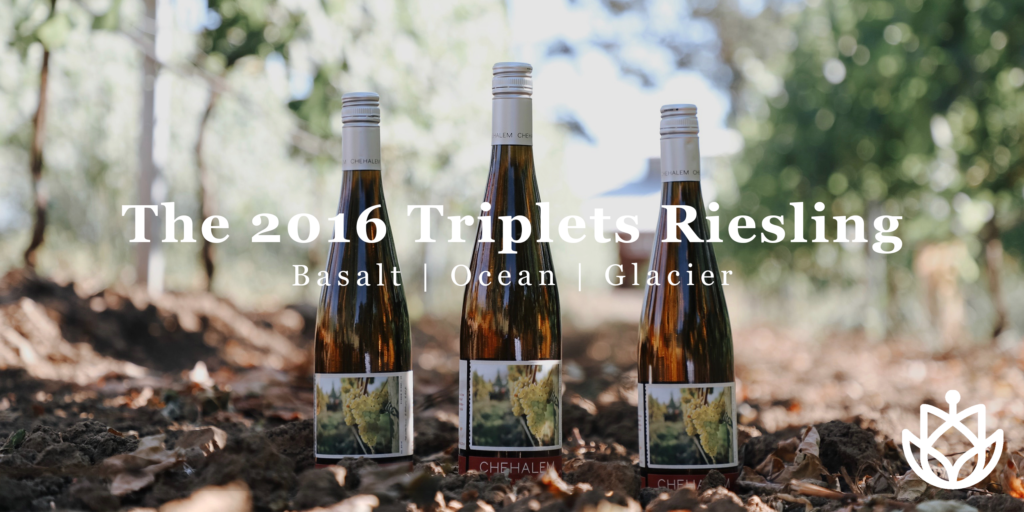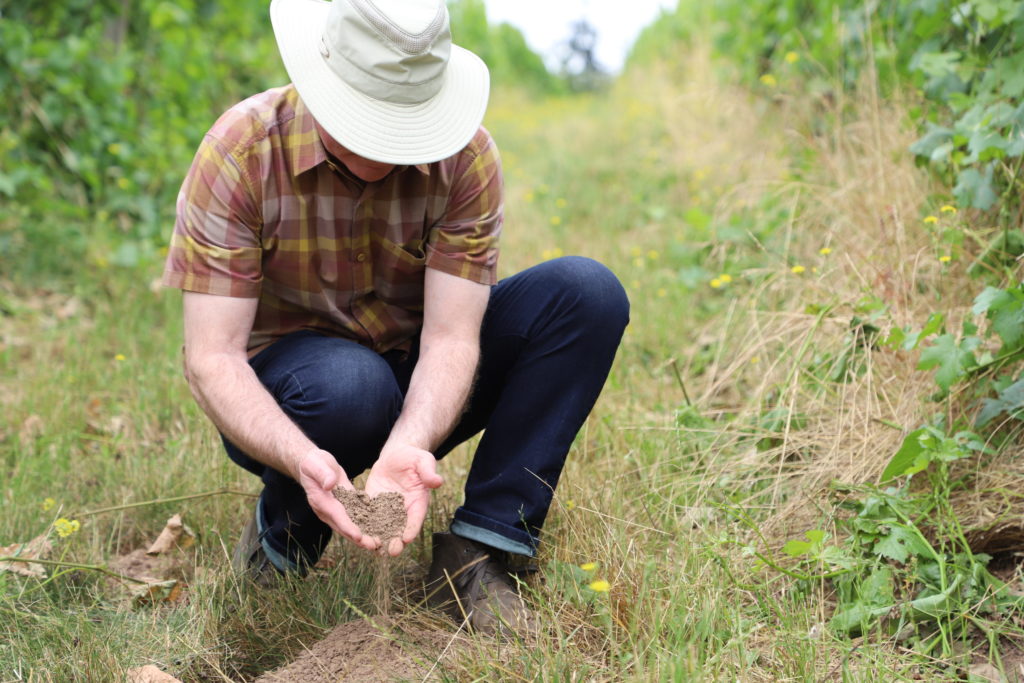This Month’s Featured

With Dave Rice, director of hospitality & Chehalem ambassador
We are hopelessly devoted to the Chehalem Mountains, so this month in our Digging Deep with Dave series, we are diving into what makes the wines from this region so special. It’s all about the soil!
As Dr. Scott Burns, geology professor emeritus at Portland State University, once explained, the Chehalem Mountains AVA (American Viticulture Area) is unique to the Willamette Valley in that it contains all three of the major soil types found in the region. This diversity of soil provides wines made here an incredible opportunity for diverse flavors and aromatic profiles, particularly with Pinot Noir.
The Three Soil Types
The primary soils of the Chehalem Mountains AVA are marine sedimentary, loess, and volcanic. Each soil imparts specific general characteristics to the wine made within this region.

Marine Sedimentary Soil
According to Dr. Burns, the marine sedimentary soil known as Wellsdale Loam contains trace amounts of sodium chloride, better known as salt. This makes sense, considering that the soil was once part of the Pacific Ocean floor and coastline. This sandstone soil imparts dense black fruit flavors and aromatics akin to blackberry, huckleberry, and current. These wines tend to have relatively long cellar potential compared to wines from other growing regions. Chehalem’s Ridgecrest Estate Pinot Noir is an excellent example of a wine from this soil type.

Loess Soil
The loess soil, known as Laurelwood, is a geologically younger windblown silty soil of glacial origin. Dr. Burns says the windblown nature of this soil means it contains components from both marine and volcanic soils, specifically iron and sodium chloride, which accounts for the medium brown color of the soil. Flavors and aromatics of wine from this soil type tend towards savory and somewhat earthy characteristics and sometimes carry notes of black plum or blueberry, depending on the vintage conditions. Our Corral Creek Vineyard Pinot Noir and Chehalem Estate Pinot Noir are excellent examples of wines from Laurelwood soil.

Volcanic Soil
The third significant soil type common to the Chehalem Mountains AVA is volcanic. One of the most celebrated volcanic soils is called Jory, officially named Oregon’s state soil in 2021. Dr. Burns explains that this soil type contains decomposed basalt rock from ancient volcanoes, resulting in excellent drainage. The higher iron content of Jory soil is responsible for its striking ruddy hue, and along with significant magnesium content, this soil displays red fruit flavors and aromas, such as Bing cherry, red plum, and red currant, with a generally broad mid-palate perception.
At Chehalem, we are fortunate to make wines in a region with tremendous diversity. These three soils are outstanding for Pinot Noir production and offer our winemaking team excellent opportunities for creating thrilling and varied wine expressions for virtually any wine lover’s palate.

We are soil geeks around here! Riesling reflects terroir best of all white varieties, but how much does winemaking influence its interpretation? Fruit was traded between three Riesling passionistas – Chehalem, Brooks, and Trisaetum – to decide whether “land” or “hand” holds sway. You can dive into the impact of each soil we deep-dived into above with our 2016 Chehalem Triplets Rieslings. Try them here.

0 Comments
Leave A Comment